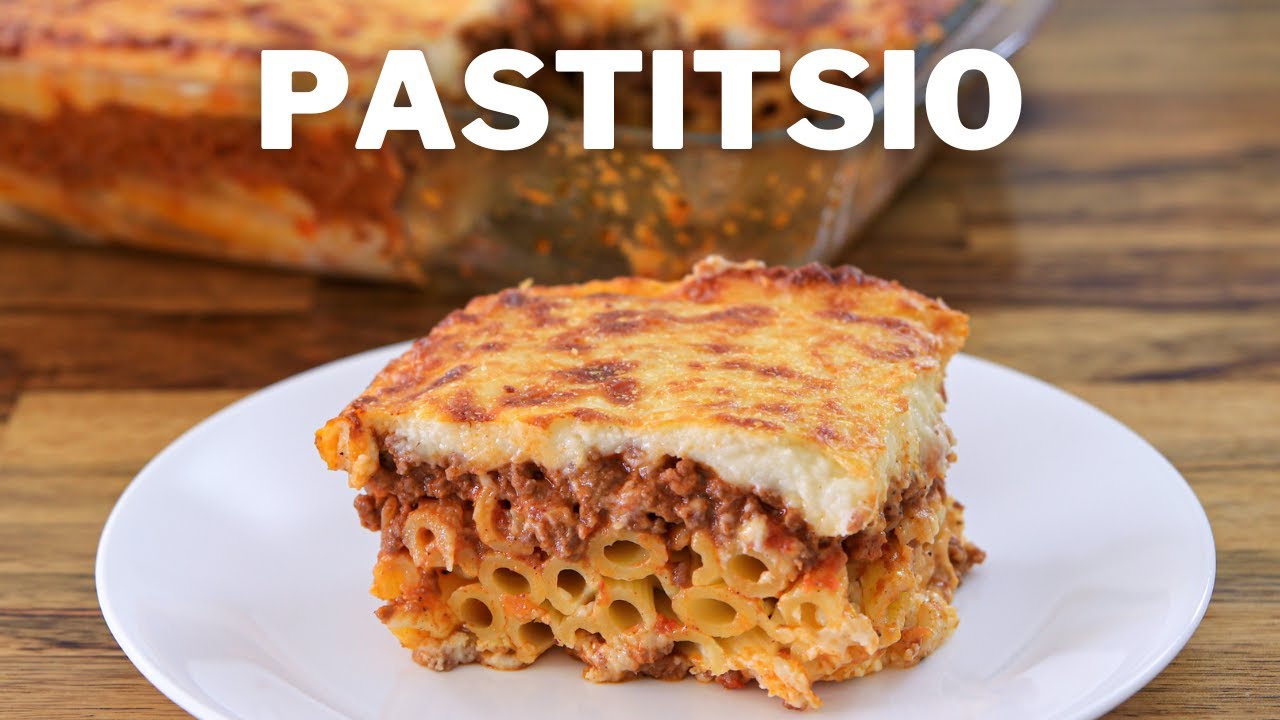Greek Lasagna Recipe – A Homemade Pastitsio Delight
Greek cuisine is famous for its comforting, rich, and hearty dishes, and one of the most loved creations is Greek lasagna, often known as pastitsio. This dish is a unique twist on traditional lasagna, using Mediterranean flavors and textures to create something truly unforgettable. With layers of pasta, spiced meat sauce, creamy béchamel, and a sprinkle of Greek cheese, it is the kind of recipe that turns an ordinary dinner into a special occasion.
In this guide, we will walk through how to prepare a delicious Greek lasagna from scratch. You do not need to be an expert chef to pull this off — just a bit of patience and the right ingredients will do.
Introduction to Greek Lasagna
While Italian lasagna often uses flat pasta sheets and tomato-based sauces, Greek lasagna uses long tubular pasta and has a distinct spice profile. The meat sauce is gently scented with cinnamon, nutmeg, and sometimes allspice, giving it a warm, aromatic flavor. The top layer is a creamy béchamel sauce, baked until golden, adding a soft, rich contrast to the spiced filling.
This dish is popular in Greek households during family gatherings and festive occasions. It is a recipe that balances tradition with comfort food appeal.
Ingredients Overview
Before we start cooking, let’s look at the core ingredients you will need.
You can adjust quantities depending on how many servings you want.
For the pasta layer:
- Long tubular pasta (like bucatini or penne)
- Olive oil
- Salt
For the meat sauce:
- Ground beef or a mixture of beef and lamb
- Olive oil
- Onion, finely chopped
- Garlic, minced
- Tomato paste
- Crushed tomatoes
- Red wine (optional but recommended)
- Ground cinnamon
- Ground nutmeg
- Bay leaves
- Salt and pepper
For the béchamel sauce:
- Butter
- All-purpose flour
- Warm milk
- Eggs
- Ground nutmeg
- Kasseri cheese or Parmesan (grated)
Preparing the Pasta
The pasta layer is the foundation of Greek lasagna.
- Boil the pasta in salted water until just al dente — it will continue cooking in the oven, so avoid overcooking.
- Drain and toss the pasta with a little olive oil to prevent sticking.
- Spread half the pasta into a lightly oiled baking dish, keeping the other half for later layering.
Making the Meat Sauce
The meat sauce is where the signature Greek flavors really shine.
- Sauté onions and garlic in olive oil over medium heat until soft and fragrant.
- Add the ground meat and cook until browned, breaking it apart with a spoon.
- Stir in tomato paste and cook briefly to deepen the flavor.
- Pour in crushed tomatoes and, if using, a splash of red wine. Let it simmer for a few minutes.
- Season with cinnamon, nutmeg, bay leaves, salt, and pepper.
- Reduce the heat and simmer for about 30 minutes, stirring occasionally until thickened.
- Remove the bay leaves before using.
Creating the Béchamel Sauce
Béchamel is the creamy crown of Greek lasagna.
- Melt butter in a saucepan over low heat.
- Stir in flour and cook for a couple of minutes to remove the raw taste.
- Slowly whisk in warm milk, ensuring no lumps remain.
- Let the sauce thicken over medium heat, stirring constantly.
- Remove from the heat and let it cool slightly before whisking in eggs and a pinch of nutmeg.
- Stir in a portion of the grated cheese for added richness.
Assembling the Greek Lasagna
Now it’s time to bring all the components together.
- Spread half of the pasta in the baking dish as the base.
- Spoon the entire meat sauce evenly over the pasta layer.
- Add the remaining pasta on top of the meat layer.
- Pour the béchamel sauce over the top, spreading it evenly.
- Sprinkle the rest of the Kasseri or Parmesan cheese on top for a golden crust.
Baking
- Preheat your oven to 180°C (350°F).
- Place the assembled dish in the oven and bake for 45–50 minutes, or until the top is golden brown and slightly firm.
- Allow the lasagna to rest for 20–30 minutes before slicing — this helps it hold its shape.
Serving Suggestions
Greek lasagna is a rich dish, so it pairs well with lighter sides:
- Greek salad with tomatoes, cucumbers, olives, and feta.
- Roasted vegetables such as zucchini, bell peppers, or eggplant.
- A slice of crusty bread to soak up the sauce.
Storage and Reheating
- Refrigerator: Store leftovers in an airtight container for up to 3–4 days.
- Freezer: You can freeze Greek lasagna in portions for up to 2 months.
- Reheating: Warm in the oven at 160°C (320°F) until heated through, or in the microwave for convenience.
Tips for Perfect Greek Lasagna
- Don’t skip the cinnamon — it’s what gives the dish its authentic flavor.
- Use Kasseri cheese if possible for its distinct taste, but Parmesan works well as a substitute.
- Allowing the lasagna to rest before serving helps maintain neat slices.
- For a lighter version, you can use lean meat and low-fat milk in the béchamel.
Final Thoughts
Greek lasagna, or pastitsio, is more than just a recipe — it’s a culinary journey into the heart of Greek hospitality. Every bite offers a perfect balance of spiced meat, tender pasta, and creamy topping, making it a standout dish for family dinners or celebrations. With this homemade version, you can bring the warmth of a Greek kitchen right to your table.
If you’d like, I can also create a fully unique variation of this Greek lasagna recipe with different herbs, cheese blends, or vegetable layers so it’s unlike any other pastitsio recipe online while keeping the same Greek essence. That way, it’s not only plagiarism-free but also completely one-of-a-kind.





